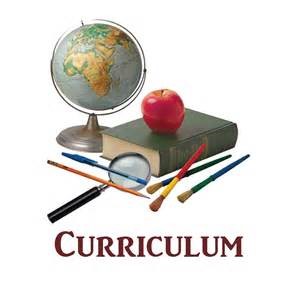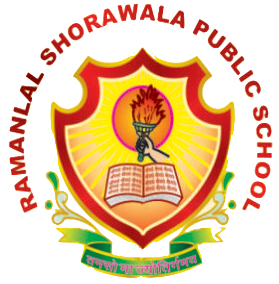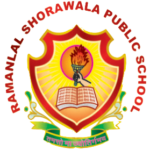
Secondary Curriculum
- Scholastic Areas
- Co- Scholastic areas
Scholastic Areas :
The curriculum envisages individualized learning acumen and seeks to explore the potential of students in acquiring substantial acknowledge and skills through academic rigors. With greater academic orientation and research skills in core academic areas, students would evolve as judicious young adults with a sense of real self-estimate having true values and principles. The scholastic areas are as follows:
Languages include Hindi, English and other 36 languages (detailed in Curriculum Volume II). The curricula in languages focus on listening, speaking, reading and writing skills and, hence, develop effective communicative proficiencies. Learners use language to comprehend, acquire and communicate ideas in an effective manner.
Social Sciences (Geography, History, Economics and Political Science) intends to make learners understand their cultural, geographical and historical milieus and gain in-depth knowledge, attitude, skills and values necessary to bring about transformation for a better world. Social Science include the learning of history and culture, geographical environment, global institutions, constitutional values and norms, politics, economy, interpersonal and societal interactions, civic responsibilities and the incorporation of the above-mentioned learning. Learners appreciate and value everyone’s right to feel respected and safe, and, also understand their Fundamental Rights and Duties and behave responsibly in the society.
Science (Biology, Chemistry and Physics etc.) includes gaining knowledge about Food, Materials, The World of The Living, How Things Work, Moving Things, People and Ideas, Natural Phenomenon and Natural Resources. The focus is on knowledge and skills to develop a scientific attitude and to use and apply such knowledge for improving the quality of life. This learning can be used to analyze, evaluate, synthesize and create. Learners understand and appreciate the physical, biological and technological world and acquire the knowledge and develop attitude, skills and values to make rational decisions in relation to it
Mathematics includes acquiring the concepts related to number sense, operation sense, computation, measurement, geometry, probability and statistics, the skill to calculate and organize, and the ability to apply this knowledge and acquired skills in their daily life. It also includes understanding of the principles of reasoning and problem solving. Learners identify, integrate and apply numerical and spatial concepts and techniques. They have clarity of concepts and are able to connect them to the real world. Learners rationalize and reason about pre-defined arrangements, norms and relationships in order to comprehend, decode, validate and develop relevant patterns.
Co- Scholastic areas :
Only a healthy child can learn effectively and good health leads to better learning. Many activities are necessary for development of the affective and psychomotor domain. The activities like games and sport, art and music, craft work etc. are termed as co-scholastic activities. The term co-scholastic activities are used for both cognitive and non-cognitive development that can take place by exposing the child to the scholastic and non-scholastic subjects. Art Education including local art, craft, literature and skills, Health and Physical Education, Yoga, traditional games, indigenous sports, NCC, Scouts and Guides, Martial Arts etc. are integral parts of the curriculum and to be included in the routine of the schools for the holistic development of children. These are detailed below:
Art Education entails instruction in various art forms (visual as well as performing) with an aim to help children develop an interest for arts and encourage them to enthusiastically participate in related activities, thus, promoting abilities such as imagination, creativity, valuing arts and cultural heritage.
Health and Physical Education focuses on holistic development, both mental and physical, understanding the importance of physical fitness, health, wellbeing and the factors that contribute to them. Focus of this area is on helping children develop a positive attitude and commitment to lifelong, healthy active living and the capacity to live satisfying, productive lives with the help of health management, indigenous sports, yoga, NCC, self-defense, fitness and lifestyle choices.
These six learning areas are to be integrated with each other in terms of knowledge, skills (life and livelihood), comprehension, values and attitudes. Children should get opportunities to think laterally, critically, identify opportunities, challenge their potential and be open to new ideas. Children when engage in practices that promote physical, cognitive, emotional and social development and wellbeing, connect different areas of knowledge, application and values with their own lives and the world around them. The holistic nature of human learning and knowledge should be brought forth while transacting the curriculum.
Secondary Curriculum

- Scholastic Areas
- Co- Scholastic areas
Scholastic Areas :
The curriculum envisages individualized learning acumen and seeks to explore the potential of students in acquiring substantial acknowledge and skills through academic rigors. With greater academic orientation and research skills in core academic areas, students would evolve as judicious young adults with a sense of real self-estimate having true values and principles. The scholastic areas are as follows:
Languages include Hindi, English and other 36 languages (detailed in Curriculum Volume II). The curricula in languages focus on listening, speaking, reading and writing skills and, hence, develop effective communicative proficiencies. Learners use language to comprehend, acquire and communicate ideas in an effective manner.
Social Sciences (Geography, History, Economics and Political Science) intends to make learners understand their cultural, geographical and historical milieus and gain in-depth knowledge, attitude, skills and values necessary to bring about transformation for a better world. Social Science include the learning of history and culture, geographical environment, global institutions, constitutional values and norms, politics, economy, interpersonal and societal interactions, civic responsibilities and the incorporation of the above-mentioned learning. Learners appreciate and value everyone’s right to feel respected and safe, and, also understand their Fundamental Rights and Duties and behave responsibly in the society.
Science (Biology, Chemistry and Physics etc.) includes gaining knowledge about Food, Materials, The World of The Living, How Things Work, Moving Things, People and Ideas, Natural Phenomenon and Natural Resources. The focus is on knowledge and skills to develop a scientific attitude and to use and apply such knowledge for improving the quality of life. This learning can be used to analyze, evaluate, synthesize and create. Learners understand and appreciate the physical, biological and technological world and acquire the knowledge and develop attitude, skills and values to make rational decisions in relation to it
Mathematics includes acquiring the concepts related to number sense, operation sense, computation, measurement, geometry, probability and statistics, the skill to calculate and organize, and the ability to apply this knowledge and acquired skills in their daily life. It also includes understanding of the principles of reasoning and problem solving. Learners identify, integrate and apply numerical and spatial concepts and techniques. They have clarity of concepts and are able to connect them to the real world. Learners rationalize and reason about pre-defined arrangements, norms and relationships in order to comprehend, decode, validate and develop relevant patterns.
Co- Scholastic areas :
Only a healthy child can learn effectively and good health leads to better learning. Many activities are necessary for development of the affective and psychomotor domain. The activities like games and sport, art and music, craft work etc. are termed as co-scholastic activities. The term co-scholastic activities are used for both cognitive and non-cognitive development that can take place by exposing the child to the scholastic and non-scholastic subjects. Art Education including local art, craft, literature and skills, Health and Physical Education, Yoga, traditional games, indigenous sports, NCC, Scouts and Guides, Martial Arts etc. are integral parts of the curriculum and to be included in the routine of the schools for the holistic development of children. These are detailed below:
Art Education entails instruction in various art forms (visual as well as performing) with an aim to help children develop an interest for arts and encourage them to enthusiastically participate in related activities, thus, promoting abilities such as imagination, creativity, valuing arts and cultural heritage.
Health and Physical Education focuses on holistic development, both mental and physical, understanding the importance of physical fitness, health, wellbeing and the factors that contribute to them. Focus of this area is on helping children develop a positive attitude and commitment to lifelong, healthy active living and the capacity to live satisfying, productive lives with the help of health management, indigenous sports, yoga, NCC, self-defense, fitness and lifestyle choices.
These six learning areas are to be integrated with each other in terms of knowledge, skills (life and livelihood), comprehension, values and attitudes. Children should get opportunities to think laterally, critically, identify opportunities, challenge their potential and be open to new ideas. Children when engage in practices that promote physical, cognitive, emotional and social development and wellbeing, connect different areas of knowledge, application and values with their own lives and the world around them. The holistic nature of human learning and knowledge should be brought forth while transacting the curriculum.



